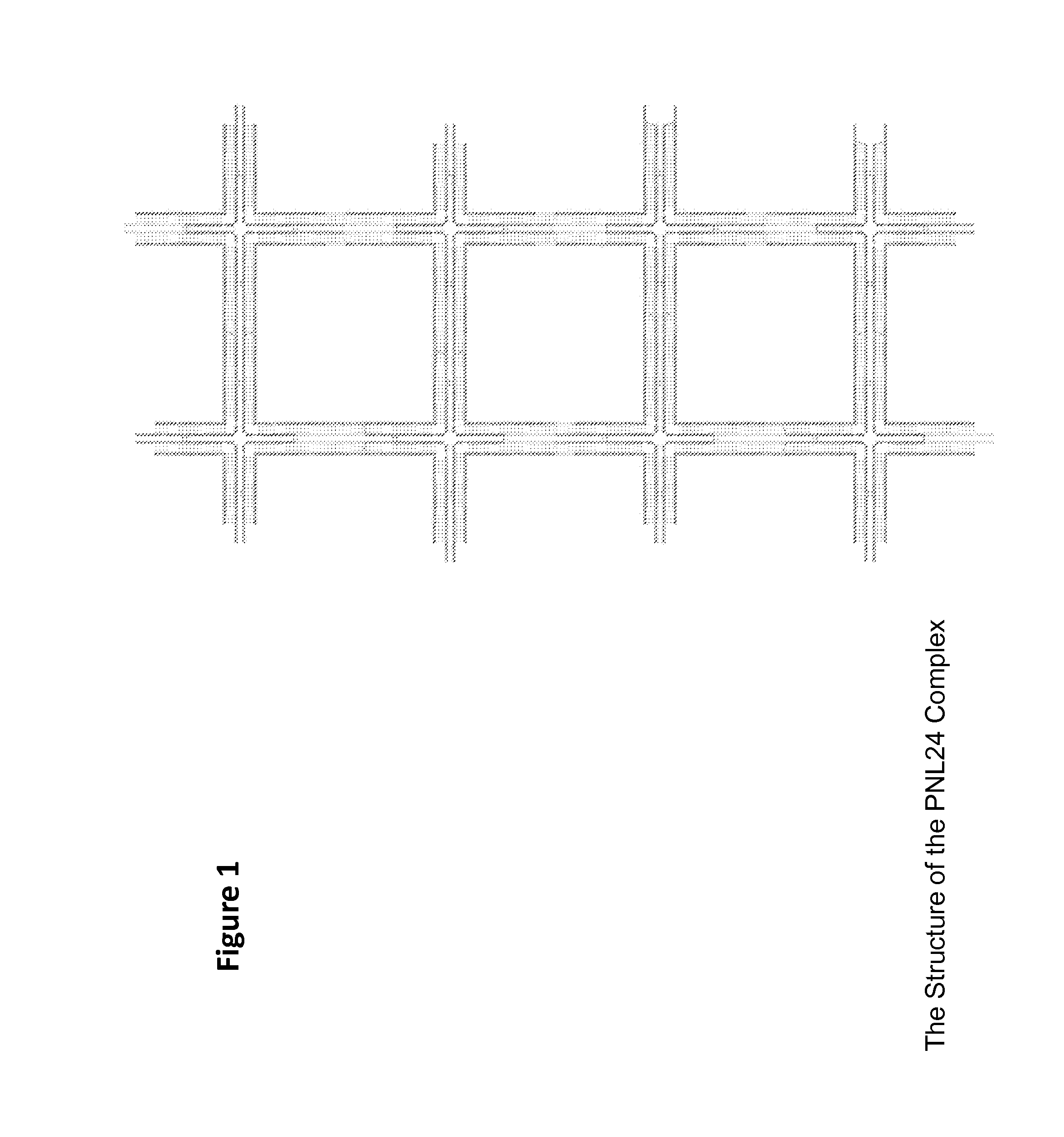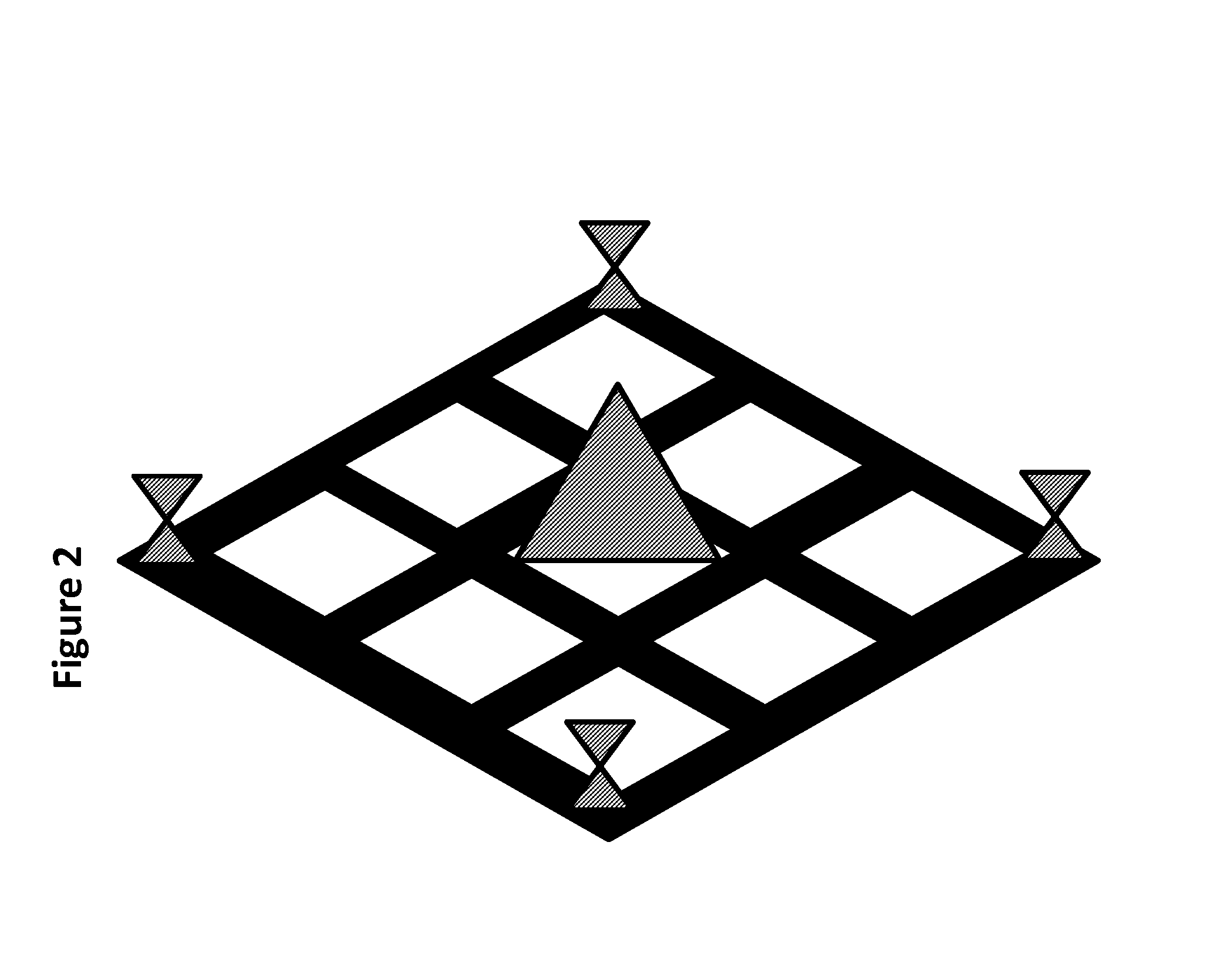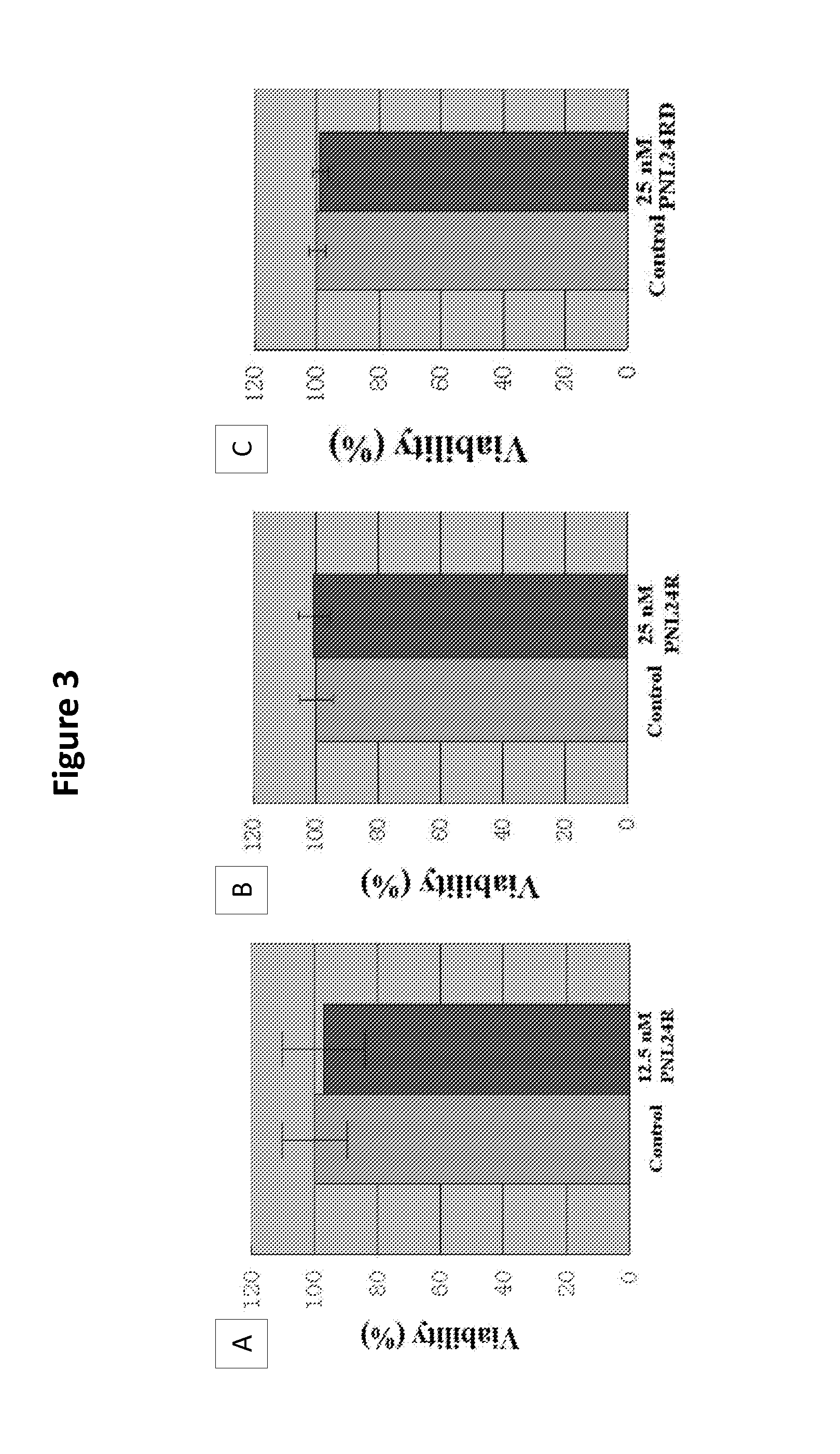Finite fully addressable nucleic acid nanostructures as nanocarriers for delivery of pharmaceuticals
a nucleic acid nanostructure, fully addressable technology, applied in the field of molecular biology and medicine, can solve the problem that none of those nanostructures have been disclosed, and achieve the effect of maximizing the immunogenicity of antigens or haptens, precise spatial arrangement of functional moieties, and rapid and efficient immune respons
- Summary
- Abstract
- Description
- Claims
- Application Information
AI Technical Summary
Benefits of technology
Problems solved by technology
Method used
Image
Examples
example 1
Construction of a Class of “PNL24” DNA Nanostructures
[0073]The oligonucleotides (elsewhere abbreviated as oligomers or oligos) for PNL24 complexes were synthesized using conventional phosphoramidite chemistry on controlled-pore glass (CPG) solid support at a synthesis scale of 1 micromole. After synthesis, the raw oligomers were reverse-phase purified and desalted by HPLC. Two functionalized variants of PNL24, described below, were used for in vitro and in vivo testing. PNL24-D is a PNL24 molecule functionalized with fluorescent dyes (D) to enable FRET imaging (FRET imaging usually involves sets of two or more fluorescent dyes or dye and dye quencher sets which enable both localization through determination of the location of the fluorescence signal and enable distance between dyes to be determined, here designed to be used as both a location indicator and as an indicator of structural integrity). PNL24-RD is equivalent to PNL24-D, except it is further functionalized with RGD peptid...
example 2
[0077]For each in vitro toxicity test, U87MG cells were divided into two groups: a control group and a treated group. Each group had six wells. Each well contained 300 uL medium. After the multi-well plate with medium was incubated in a CO2 incubator at 37° C. in 5% CO2 and 100% humidity for two hours to reach equilibrium with the environment, 5×104 U87MG cells were seeded in each well and incubated for 24 hours to allow the cells to adhere to the bottom of the wells. Thereafter, the media in the treated group was replaced with a 300 uL mixture of fresh media and PNL24 complex. The media in the control group wells was changed to a 300 uL mixture of fresh media and buffer. After a 24-hour incubation, the media in both groups was changed to a mixture of 250 uL fresh media and 50 uL of CellTiter 96 AQueous One Solution (Promega, Cat. #: G3582) in each well. A no-cell control with 300 uL of the mixture was also added in an empty well. The multiwell plate was fur...
example 3
Imaging Studies Demonstrating Accumulation in Tumor
[0080]The oligonucleotides for PNL24 were synthesized using conventional phosphoramidite chemistry on controlled-pore glass (CPG) solid support at a synthesis scale of 1 micromole. After synthesis, the raw oligomers were reverse-phase purified and desalted by HPLC. To produce PNL24-D and PNL24-RD an additional primary amine group was added at the functionalization site of those oligos designated to localize either a fluorescent probe or RGD targeting peptide (GRGDSP). Conjugation was performed in aqueous buffer (pH 6.0) against excess NHS-ester functionalized moeties. Two fluorescent probes (donor and acceptor) were used to create FRET pairs (Cy5.5™ / Cy7™) at each PNL24 motif intersection and a 6-mer linear RGD peptide was used as a targeting molecule attached to the center of each motif in PNL24-RD.
[0081]The names and sequences of the DNA oligonucleotides used to produce PNL24 complexes are the same as the sequences in Example 1.
[00...
PUM
| Property | Measurement | Unit |
|---|---|---|
| half life | aaaaa | aaaaa |
| pH | aaaaa | aaaaa |
| size | aaaaa | aaaaa |
Abstract
Description
Claims
Application Information
 Login to View More
Login to View More - R&D
- Intellectual Property
- Life Sciences
- Materials
- Tech Scout
- Unparalleled Data Quality
- Higher Quality Content
- 60% Fewer Hallucinations
Browse by: Latest US Patents, China's latest patents, Technical Efficacy Thesaurus, Application Domain, Technology Topic, Popular Technical Reports.
© 2025 PatSnap. All rights reserved.Legal|Privacy policy|Modern Slavery Act Transparency Statement|Sitemap|About US| Contact US: help@patsnap.com



